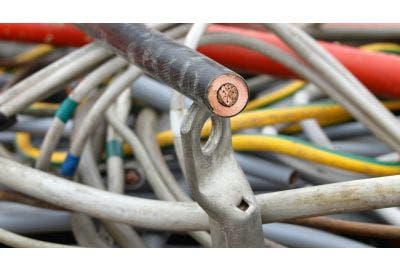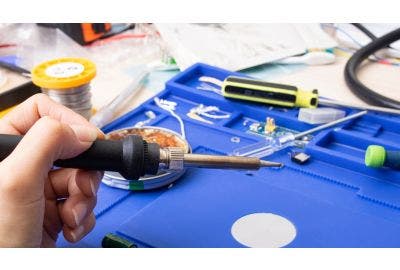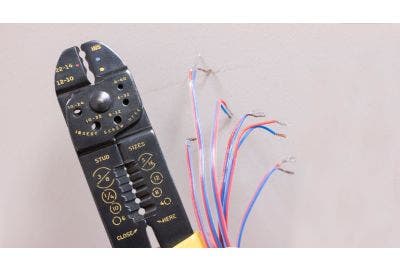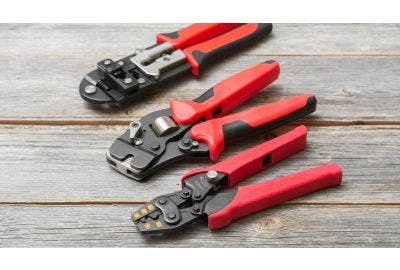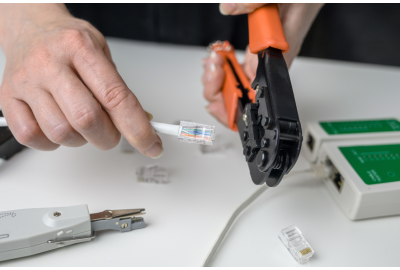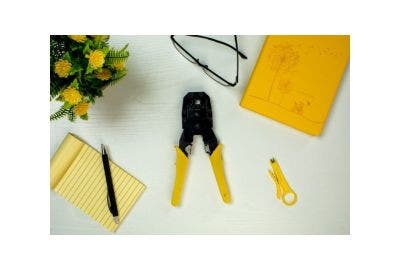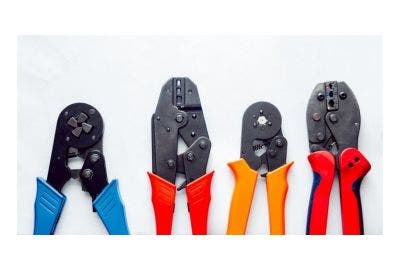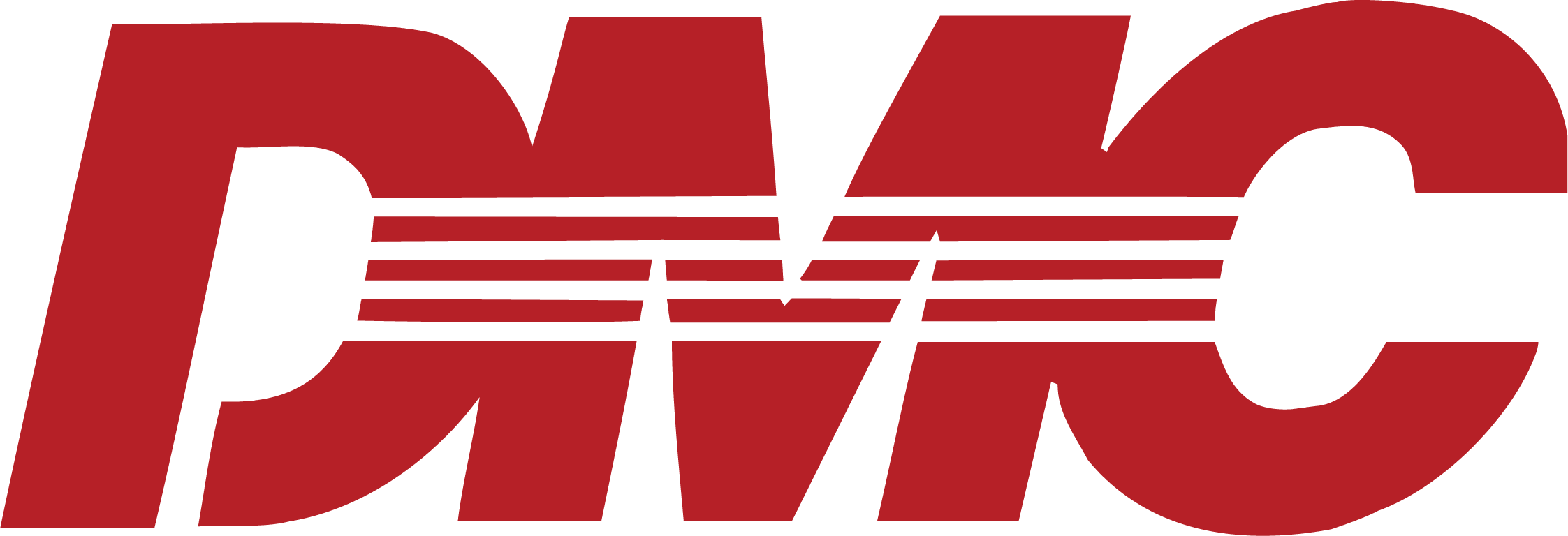There is an ongoing debate concerning which wire connecting method is better; soldering or crimping. For professionals, including jewellers, metal workers and electricians, this question can determine which tools they purchase and use.
Soldering and crimping tools bring their unique advantages and disadvantages that you must consider. This blog debates between soldering irons vs crimp connectors to help you make an informed choice. Which one do you need?
What is Soldering?
This wire connection method is the more traditional method of the two.
Soldering involves melting a metal alloy (solder) to create a bond between two wires and requires a heat source to melt the solder.
What Are The Advantages of Soldering Wires?
1. Accessibility
Soldering materials are readily available, making it a go-to option for various applications. You can easily find what you need, from basic soldering kits to specialised solder alloys, in multiple locations.
2. Affordability
This process is cost-effective with reasonably priced equipment, including soldering irons and solder wire. This affordability ensures that professionals and hobbyists can adopt soldering without straining their budgets.
3. Simple to Perform
While requiring skill and precision, soldering is relatively simple to learn with practice. Its simplicity allows beginners to grasp the fundamentals swiftly and produce reliable connections.
4. Minimal Tools Needed
Compared to more complicated wire connecting methods, soldering requires only a few essential tools: a soldering iron for wire, solder wire, flux, and a heat source. This minimalistic approach means people can start soldering with a basic kit, minimising the initial investment while achieving quality results.
What Are The Disadvantages of Soldering Wires?
1. Labour Intensive
Soldering demands precision and attention, often requiring significant time and effort to create strong, reliable connections.
2. Time-Consuming
The nature of soldering and the need for careful work make the process time-consuming, especially for complicated projects or large-scale applications.
3. Risk of Mechanical or Temperature Stresses
Improper soldering techniques can make connections vulnerable to mechanical or temperature stresses, compromising the joint's stability over time.
4. Less Practical for Harsh Environments
Soldered connections might not withstand extreme temperatures, high humidity, or corrosive substances, limiting their practicality in specific industrial or outdoor settings.
5. Filler Metal Degradation
Over time, the filler metal in soldered joints can degrade, potentially weakening the connection and necessitating repairs or replacements.
6. 'Cold Solder' Join
Insufficient heat or improper technique can result in a 'cold solder' join, creating a weak bond between wires that is susceptible to breaking under strain.
7. Hazardous Materials
Some solder contains lead, a hazardous substance. It produces fumes and dust that pose health risks when heated, making proper ventilation and safety measures essential during soldering processes.
Featured Product: Metcal CV-5210 80 Watt Advanced Soldering System
If you need a soldering system for your project, this soldering iron for wire is the ideal solution. With no calibration required, the tool has a fast, repeatable and safe process and a five-year warranty. Not only can it deliver the amount of power you need for your solder joint, but it is also password-protected, so you can limit who has access to the station.
What is Crimping?
In wire connecting, crimping is a reliable and efficient method offering precise, durable results. This technique involves using a specialised crimping tool to deform a metal sleeve around the wires, ensuring a secure bond.
The Main Advantages of Crimping Wires
1. Connections are More Flexible
Crimping allows wires to maintain natural flexibility, making it an ideal choice for applications where movement and vibration are common. This flexibility ensures the connection can endure mechanical stress without weakening over time.
2. More Consistent
Wire crimpers offer uniformity in every connection. Using specialised tools ensures that each crimp is consistent, providing a reliable and predictable result every time. This consistency is crucial, especially in complex projects or large-scale applications.
3. Quick to Perform
This process is notably fast, making it a preferred method for professionals working on time-sensitive projects. Its efficiency allows individuals to complete tasks swiftly without compromising the quality of the connections.
4. Creates a 'Cold Weld'
During crimping, the pressure applied is substantial enough to create a 'cold weld.' This weld occurs when metals and oxide layers merge on a microscopic level, forming a robust and enduring connection. This process ensures the joint's strength and longevity.
5. Reliable
Crimped connections are renowned for their reliability. They maintain their integrity under various conditions, making them dependable in everyday applications and specialised industrial settings.
6. Safer to Perform
Compared to soldering, crimping eliminates the need for hot materials, making it inherently safer. Professionals can work knowing that crimping reduces the risk of burns or exposure to hazardous substances.
The Main Disadvantages of Crimping Wires
1. Expensive Tools
Specialised crimp tools can be costly, requiring a significant initial investment. This cost can be an issue for some people, especially those working on smaller projects with limited budgets.
2. Risk of Wire Damage
Using the wrong crimping tool or applying an incorrect technique can lead to wire damage. Damaged wires compromise the integrity of the connection, potentially causing electrical issues or failures in the system.
3. Irreversible
Unlike soldering, crimped connections are generally irreversible. If a crimped joint fails, attempting to re-crimp the wires can lead to further damage. In such cases, you must replace the entire assembly, which can be time-consuming and costly.
4. Reduced Conductivity
Crimping involves compressing the wire and terminal together, which can slightly reduce the wire's conductivity. While this reduction is often negligible for most applications, it's a factor to consider, especially when high conductivity is crucial.
Featured Product: DMC HX23 Pneumatic Crimp Tool
This pneumatic wire crimper's design has safety in mind, and it prevents the user from trapping their fingers by having a transparent cover over the crimping area. It accommodates most DMC "Y" series and M22520/5-XX military crimp dies, offering full die closure for every crimp.
If you want to know more about soldering and crimping, Heamar has various products to help you with both connection methods. Whether you want to solder or crimp, we have the tools you need to get your desired join. See how Heamar can help you with your tool needs today!


